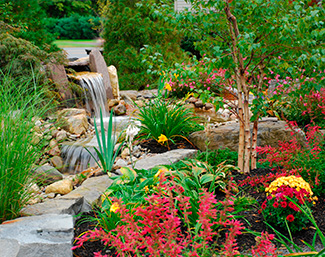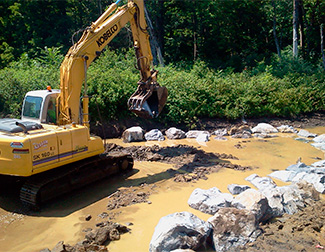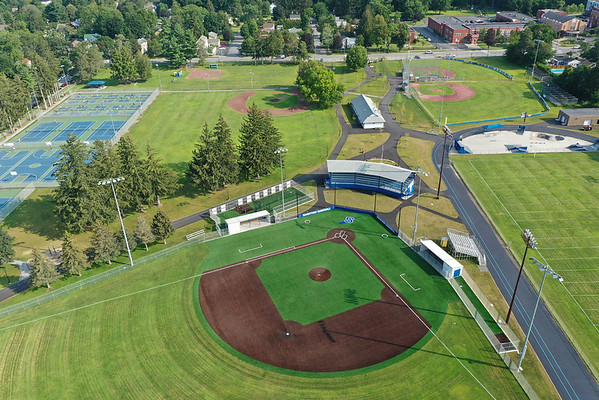Understand What is Underfoot and Underground
Low Impact Design is simply a new phrase to describe the way The LA Group has always practiced. When landscapes and buildings are designed in harmony with the natural setting, disruption to water resources, habitats, indigenous species and soils are eliminated or minimized.
Our team of licensed Landscape Architects, Certified Environmental Planners, Environmental Scientists and Civil Engineers has been educated in site analysis and environmental sustainability, with LEED Certified Professionals in every studio. Through a collaborative approach, we bring a variety of viewpoints and skill sets to every project. The result is a quicker analysis of site feasibility and more balanced solutions.
Collaboration with other professionals also drives results. From architects to mechanical and plumbing engineers and facilities personnel, The LA Group helps teams to understand site environments and how to maintain a greener profile.
Stormwater Masterplanning and Design
A Soft Approach to Site Engineering
Stormwater planning is a fundamental part of the practice of landscape architecture and land development planning. Since our inception, The LA Group has employed dozens of landscape architecture solutions to naturally minimize stormwater runoff. Rain gardens and grass swales, green roofs and permeable pavement are but a few of the techniques integrated in our projects through our multi-disciplinary team approach.
All federal agencies are required to comply with the provisions of the Clean Water Act, which includes stormwater discharges. This has been further integrated into stormwater management as a result of the Phase I and Phase II Environmental Protection Agency Stormwater rules. These rules regulate construction activities, post-construction, operation of municipal separation storm sewer systems (MS4), and non-traditional MS4s (colleges, large campuses).
Permitting involves analysis of site conditions, inventory of stormwater management facilities, modeling of stormwater flows, and planning of treatment devices. Many of the preferred treatment devices involve wetland basins, rain gardens, and bio swales in order to polish the stormwater flow. These devices require detailed analysis of flow and knowledge of plant material in order to effectively treat stormwater.
As part of stormwater permitting, planning and phasing of development to meet disturbance limits is necessary. This frequently includes establishment of temporary construction sediment basins.
Planning for on-site management of stormwater discharges within the context of the downstream neighborhood is an issue that frequently has to be addressed by retrofitting discharge swales with rip-rap or other velocity control devices. Many other methods including wetland base treatment and extended detention basins are available to manage and improve the quality of stormwater.
Stormwater management standards are now regulated through federal and state guidelines. We walk projects seamlessly through these challenges, applying best practices that reduce runoff.
Green Infrastructure
Building with Nature
Less pavement. More plantings. Green infrastructure uses vegetation, soils and natural processes to manage water and create healthier urban environments. The LA Group combines an understanding of environmental impacts and the engineering know-how to calculate successful outcomes. With a balanced approach that considers what an owner is prepared to build as well as committed to maintain, we weave a range of green infrastructure elements throughout our projects, including:
- Downspout Disconnection
- Rainwater Harvesting
- Rain Gardens
- Planter Boxes
- Bioswales
- Permeable Pavements
- Green Alleys and Streets
- Green Parking
Green Roofs
Green roofs present a unique opportunity to integrate the built environment with landscape features that increase usable acreage and space for site amenities while employing a number of green infrastructure techniques. Through intense collaboration with the entire building design team, we’ve achieved exciting results that incorporate gardens, plazas, and even a campus quad atop structures such as underground parking garages, downtown buildings and community housing complexes.
Our award-winning project at the SUNY Orange Campus in Newburgh, NY, provides an excellent example.
Green Infrastructure has also become a popular concept among those looking to tread lightly on the site. Our projects exemplify a number of approaches that minimize disruption and create inviting outdoor spaces.




